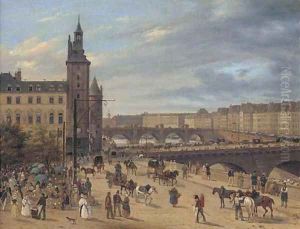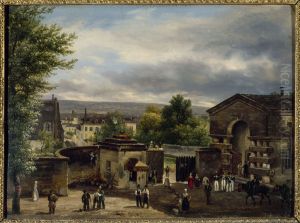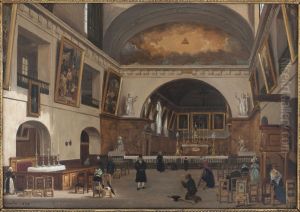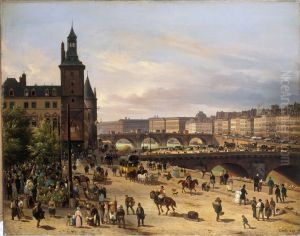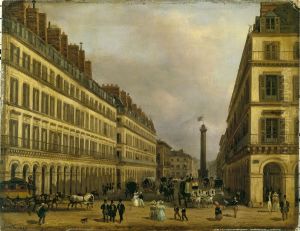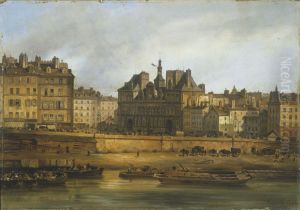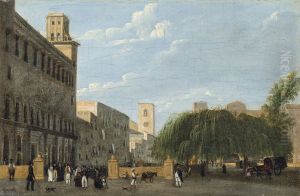Giuseppe Canella Paintings
Giuseppe Canella was an Italian painter born on July 28, 1788, in Verona, Italy, into a family of artists. His father, Giovanni, was a painter and decorator, and he had several brothers who were also involved in the arts. Canella started his career as a set designer, working at La Fenice in Venice, but he eventually turned to landscape painting, which would become his primary focus.
In the early years of the 19th century, Canella moved to Milan, which was under the Napoleonic rule at the time, and where he came into contact with important artistic circles. He was influenced by the Neoclassical landscape tradition, particularly by the works of artists like Giovanni Migliara. Canella's landscapes were characterized by their attention to detail, precise drawing, and the influence of the vedutisti, the Italian landscape painters whose work focused on 'vedute', or views of urban and rural scenes.
Throughout his career, Canella traveled extensively throughout Italy, France, and Germany, sketching and painting the landscapes, cityscapes, and architecture he encountered. His works were appreciated for their topographical accuracy and often included historical or contemporary figures, which added a narrative element to his scenes. He was also known for his architectural capricci, where he combined real and imaginary elements in a single composition.
Canella's success grew, and he exhibited his works in various Italian cities, gaining commissions from wealthy patrons and members of the nobility. His paintings were sought after not only in Italy but also abroad, as they were appealing to the Grand Tour travelers who wanted souvenirs of their travels through Europe.
Giuseppe Canella's sons, Enrico and Carlo, were also painters, and they followed in their father's footsteps, specializing in similar subjects. Canella's work contributed to the development of the Lombard landscape tradition and the broader Italian landscape painting scene of the 19th century.
Giuseppe Canella passed away on September 11, 1847, in Florence, Italy. His legacy is preserved in the collections of numerous galleries and museums, where his paintings continue to be admired for their clarity, detail, and evocative representation of the Italian and European landscapes.
